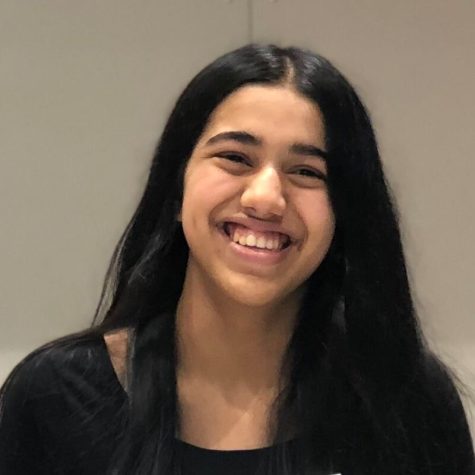Third annual celebration of AAPI+ Heritage Month
June 19, 2023
“Being an Asian American or Pacific Islander is an important thing,” said student organizer Nikhil Kishore (’24). “And it’s part of someone’s heritage. I believe that just like someone’s sexuality, or abilities, that deserves to be celebrated. And it deserves to be recognized.”
May 1 marked the beginning of AAPI (Asian American and Pacific Islander) Heritage Month, a month-long celebration of Asian American and Pacific Islander history and contributions to the American story. According to the United States Senate, AAPI month was first established in 1992 by President George H. W. Bush.
The purpose of heritage months is to bring awareness to cultures and communities that are often overlooked in history. “If we don’t take a step forward and lift other people’s voices, there’s gonna be no change,” said AAPI co-student director Dima Al-Quzwini (‘25). The other student leaders involved in this celebration include Anvi Garg (‘24), Eliana Hebert (‘25), and Nikhil Kishore (‘24).
South’s first AAPI month celebration was in 2021, and it has become a tradition for our community since then. This year, AAPI organizers incorporated AAPI history and contributions in classrooms with 15-minute mini lessons. Interested students led these lessons, some of which aligned with what was being taught in their classes. An estimated 25 mini lessons were seen throughout the school this year.
One such student was Sara Daway (‘26), who was learning about WWI in her World History Class. She led a mini-lesson about the “Ghadar Party, which was an Indian revolutionary movement” during the era. The party was founded by refugee Indians in America who aimed to overthrow British rule in India. Another student, Milan Merchant (‘25), took a different approach. He highlighted a prominent AAPI scientist and writer, Siddhartha Mukherjee, and “his approach to cure cancer [by] changing the environment in the human body to prevent its spread.” Mukherjee is well known for his book, The Gene, which was made into a documentary by Ken Burns. It focuses on the story of a family searching for a cure for a rare disease that their four year old daughter has, highlighting important parts of genetics in history.
“We’re all part of the story, the fabric of our country,” said Thara Ellsworth (‘23), who presented a mini-lesson on Vietnam. “It’s just important that we all see ourselves as integral parts of the community, and that we know that we have made contributions, we deserve to be celebrated, and that we can make great contributions in the future.”
A variety of new activities were also offered in the Media Center throughout the month of May, including interactive and hands-on projects for students during Art week, which was from May 15 to May 19.
“I conducted a little art center in the Media Center at the makerspace, where students did Asian art, calligraphy, henna designs on cards,” said Ms. Samirah Akhlaq, an art teacher. “It is so rich, the literature and the art from that part of the world. It’s a treat to be able to share it with other people.” In addition to Ms. Akhlaq, social studies Mr. Daniel Kim and language arts teacher Ms. Sima Kumar made up the teacher coordinators.
Student artists Arshia Chakrabarti (‘24), Bani Kaur (‘24), and Vaishnavi Kunamaneni (‘24) researched AAPI art for the showcase in the Media Center, aiming to highlight art as an important part of AAPI culture. “I know that people don’t think of art enough as an important part of history or important practice of our cultures and our heritage, but it is,” said Chakrabarti (‘24). “Art is more important than you think.”
In honor of AAPI month, the Media Center also hosted a Read-In, where students could listen to poetry or excerpts from larger works from AAPI authors on May 30 and 31. Students and teachers had the opportunity to participate in the Read-In by presenting an excerpt of a text of their choosing.
“The reading gave insight into how our American Culture became a part of us, a part of our Asian ethnicity and vice versa as Asian culture is becoming a part of American culture,” said Tammy Chao (‘23), who attended the Read-In. “We have come a long way.”
“We have such a large Asian American population in our school, and we just want to do our absolute most to support them and then lift their voices,” said Al-Quzwini (‘25). In the 2021-22 school year, 70.6% of all students in WW-P identified as Asian Americans or Pacific Islanders, according to the New Jersey Department of Education.
Kishore (‘24) said, “I think it’s important that we celebrate, recognize and acknowledge the contributions of Asian Americans and Pacific Islanders throughout history.”
Side bar: A.A.P.I. stands for Asian American and Pacific Islander. The umbrella term includes people from the entire Asian subcontinent, describing people from more than 75 countries.

